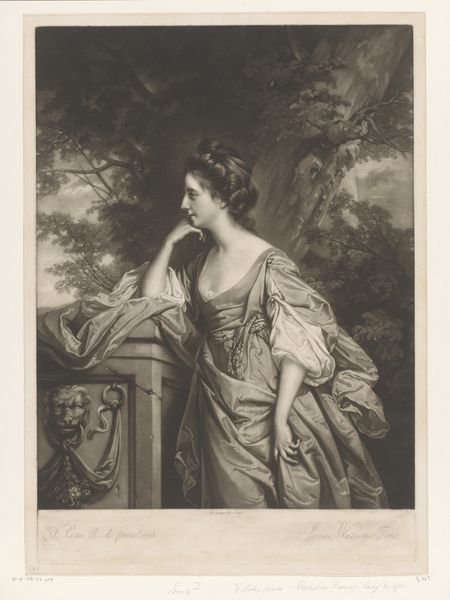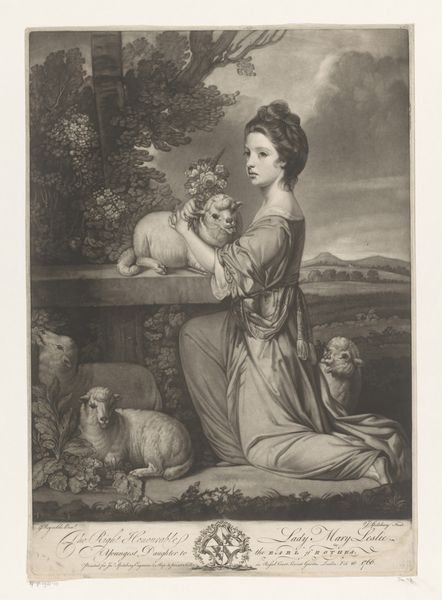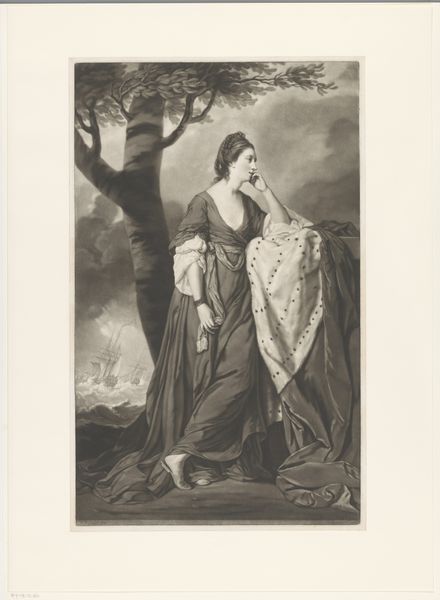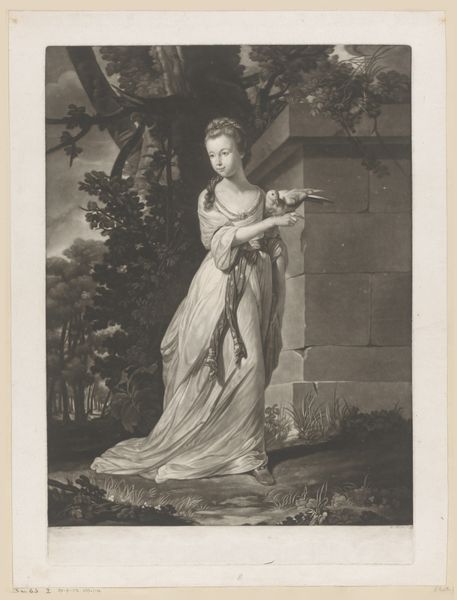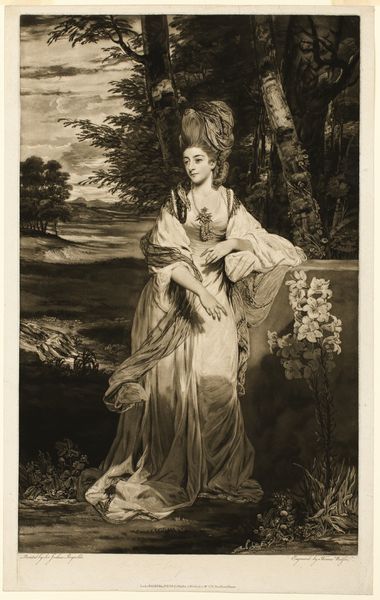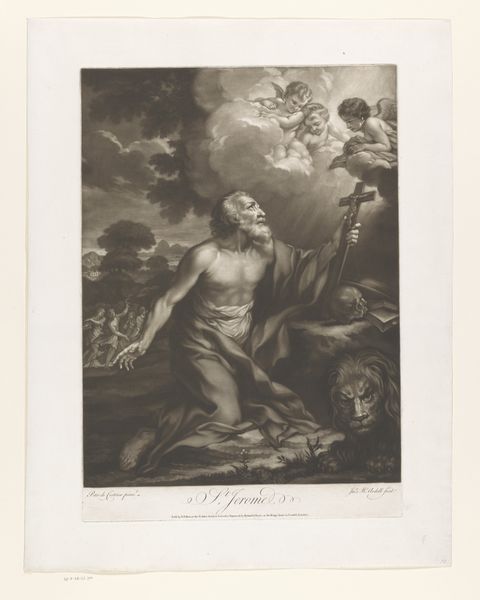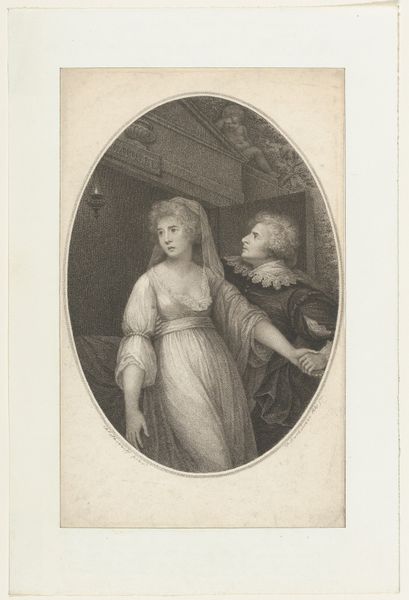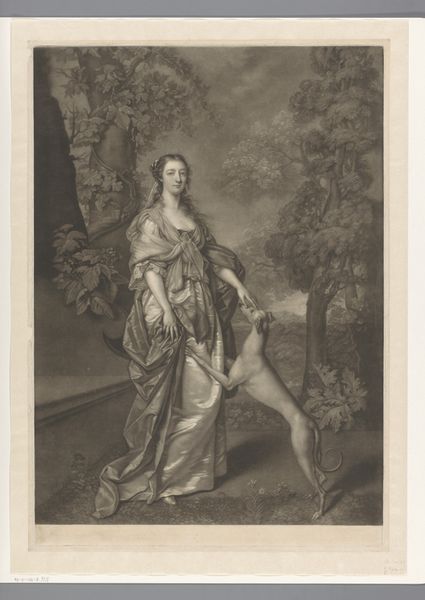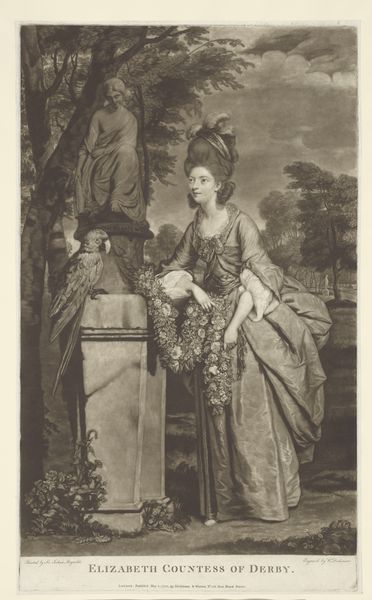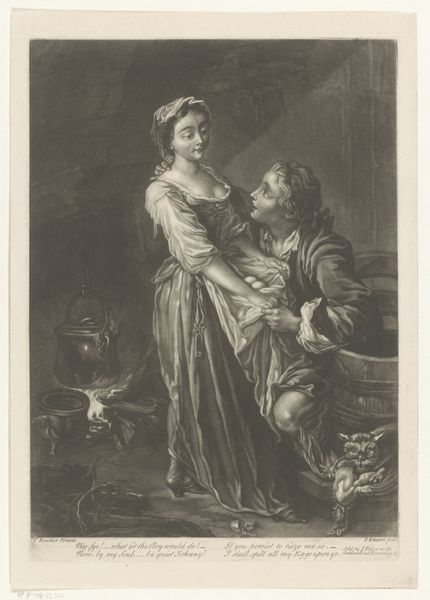
Dimensions: height 616 mm, width 403 mm
Copyright: Rijks Museum: Open Domain
John Dixon created this mezzotint portrait of Annabella Bunbury as Juno around 1770. The image is a fascinating mix of classical allusion and contemporary British society. Annabella Bunbury, a woman of the British elite, is depicted as Juno, the Roman queen of the gods. This comparison elevates her status, associating her with power, beauty, and divine authority, all important attributes for women of the British upper class. The presence of Juno's symbols, such as the peacock, reinforces this association, while the attendant Cupid adds an element of romantic love and desire. This was a period where portraiture was closely tied to social status and identity. The work reflects the cultural values and aspirations of the British aristocracy, their fascination with classical antiquity, and their desire to project an image of refinement and grandeur. Understanding this work requires delving into the social history of 18th-century Britain, exploring the dynamics of class, gender, and the visual language of power and beauty. Examining the artist's other works, and the patronage networks of the time, can further enrich our understanding.
Comments
No comments
Be the first to comment and join the conversation on the ultimate creative platform.

